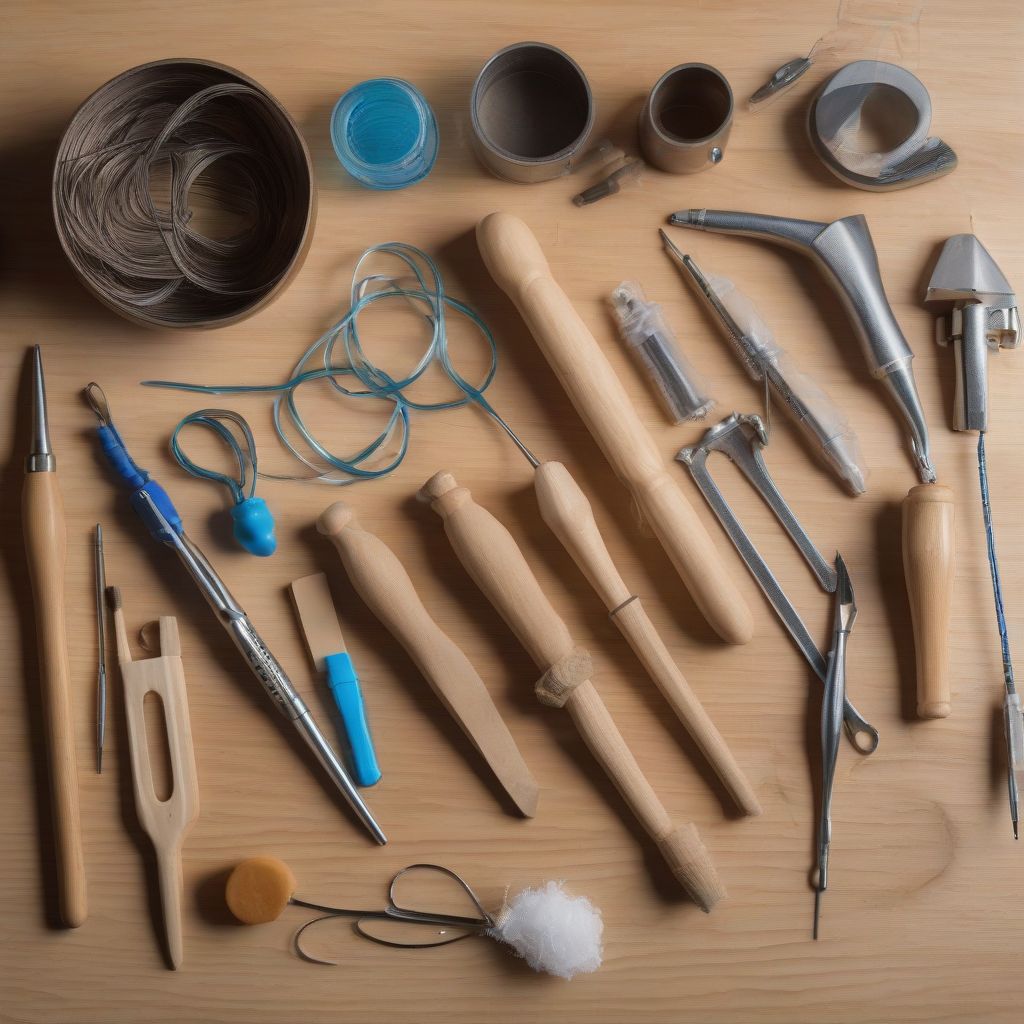Have you ever looked at a stunning sculpture and felt a surge of inspiration, imagining yourself creating something equally captivating? It’s a common dream, and for good reason! Sculpting is a wonderfully tactile and expressive art form that allows you to bring your imagination to life in three dimensions. While the works of master sculptors might seem daunting, remember that even Michelangelo started with the basics. This beginner’s guide will equip you with the foundational sculpting techniques you need to embark on your artistic journey.
Choosing Your Clay: A World of Possibilities
Before you dive into the exciting world of sculpting techniques, you’ll need the perfect medium to work with. Here’s a look at some popular options for beginners:
-
Air-dry clay: As the name suggests, this clay hardens naturally in the air, making it incredibly convenient for beginners. It’s affordable, readily available, and requires no special equipment like a kiln for firing.
-
Polymer clay: Known for its vibrant colors and versatility, polymer clay hardens in a regular oven. It’s excellent for creating intricate details and miniature sculptures.
-
Water-based clay: This classic sculpting material offers a wonderful tactile experience and is easy to smooth and shape. Keep in mind that water-based clay needs to be kept moist while you’re working and requires firing in a kiln to harden permanently.
Essential Sculpting Tools: Your Artistic Arsenal
While you can achieve a surprising amount with just your hands, having the right tools can significantly enhance your sculpting experience and open up new creative avenues. Don’t worry about amassing a huge collection right away; start with these fundamental tools:
-
Sculpting tools: These come in various shapes and sizes, each designed for specific tasks. Look for a basic set that includes tools for smoothing, shaping, carving, and adding details.
-
Wire loop tool: Perfect for removing excess clay and creating smooth, concave surfaces.
-
Wooden modeling tools: These versatile tools are ideal for blending, shaping, and adding texture to your sculptures.
-
Sponge: A damp sponge is essential for smoothing out rough edges and creating a polished finish.
-
Water pot: Keep a small container of water handy to keep your clay moist and your fingers from sticking.
 Sculpting Tools for Beginners
Sculpting Tools for Beginners
[amazon bestseller=”sculpting tools for beginners”]
Mastering the Basic Sculpting Techniques
Now that you’re equipped with the right materials and tools, it’s time to explore the fundamental sculpting techniques that will form the foundation of your artistic creations:
1. Pinch Pot Technique:
This foundational technique is a great starting point for beginners. Start with a ball of clay and use your thumbs to pinch and press the clay from the center outwards, creating a bowl-like shape. You can create a variety of forms using this technique, from simple bowls and cups to more intricate vessels and organic shapes.
2. Slab Building Technique:
This technique involves rolling out clay into flat sheets or slabs and then assembling them to construct your desired forms. You can create boxes, geometric sculptures, and even build up walls to make hollow forms.
3. Coil Building Technique:
One of the oldest sculpting techniques, coil building involves rolling out long, snake-like strands of clay and layering them on top of each other. The coils are then carefully blended together to create the sculpture’s form. This versatile technique is excellent for making organic shapes, vases, and even figurative sculptures.
4. Modeling and Shaping:
Once you’ve created a basic form using one of the techniques above, it’s time to refine and add detail. This is where your sculpting tools come into play. Use your tools to smooth out rough edges, carve details, and add texture to your sculpture.
5. Adding Texture:
Texture can bring your sculptures to life by adding visual interest and depth. Experiment with different materials to create unique textures. You can use textured fabrics, sponges, even household items like toothbrushes or forks to create patterns and impressions on your clay.
Tips for Sculpting Success:
-
Don’t be afraid to experiment: Sculpting is all about exploring and discovering new ways to manipulate your chosen material. Don’t be afraid to try new things, even if it means your first few attempts aren’t perfect.
-
Work in a well-lit area: Good lighting is essential for seeing the details of your sculpture and avoiding any imperfections.
-
Keep your clay moist: If you’re working with water-based clay, it’s important to keep it from drying out. Use a spray bottle to mist your sculpture periodically, or cover it with a damp cloth when you’re not working on it.
-
Learn from your mistakes: Everyone makes mistakes when they’re first starting out. The key is to view those mistakes as learning opportunities. Pay attention to what worked and what didn’t, and use that knowledge to improve your skills.
-
Find inspiration all around you: Observe the world around you with an artist’s eye. Study the natural forms of plants, animals, and the human figure. Let these observations inspire your own unique creations.
Conclusion:
Embarking on your sculpting journey is an incredibly rewarding experience. As you begin to explore these basic sculpting techniques, remember that patience, practice, and a willingness to experiment are your greatest allies. Allow your creativity to flow freely, and don’t be afraid to make mistakes along the way. With each sculpture you create, you’ll hone your skills and discover new and exciting ways to bring your artistic vision to life.
Now that you’ve dipped your toes into the world of sculpting, what will you create? Share your thoughts and experiences in the comments below!
